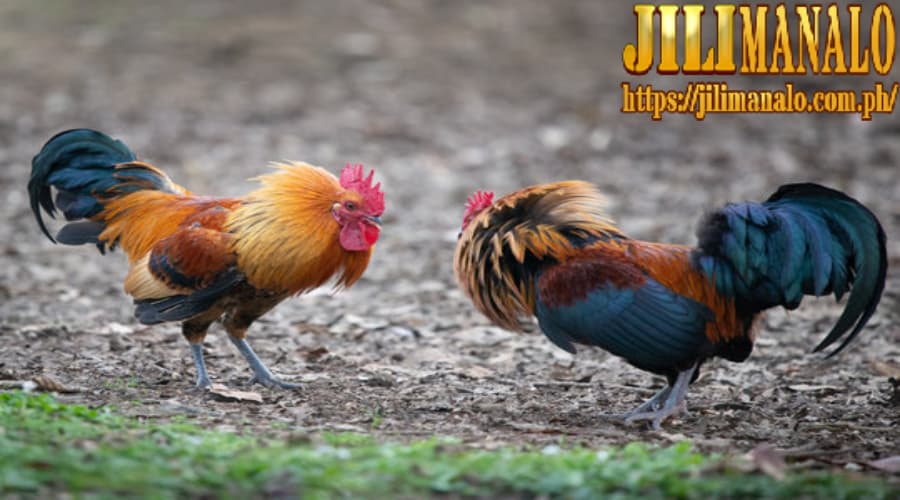Instructions On How to Raise Fighting Chickens From A to Z Only At Jilimanalo
How to raise fighting chickens to the pin is a matter of concern for many cockfighters. Join Jilimanalo to learn the techniques, strategies and important notes to raise chickens effectively. Make sure you have full knowledge with the necessary steps to successfully raise fighting chickens to the pin.
How To Raise Fighting Chickens To Pin Based On Their Characteristics
How to raise fighting chickens to pin is a process that requires a deep understanding of their characteristics. To be successful in raising fighting chickens to pin, players need to have solid knowledge about how to choose breeds, build living environments, manage nutrition and train them.
From choosing the right breed to providing food and water, every detail is meticulously prepared. Helping cockfighters to raise fighting chickens to pin in the most effective way.
- Size: The size of a pin-fighting chicken can range from small to medium, depending on the specific breed. On average, they can be 40 to 50 cm tall and 60 to 70 cm long.
- Weight: The weight of a pin-fighting chicken also varies by breed. On average, they can weigh between 2 and 4 kg, but some breeds can be heavier or lighter depending on genetics and rearing conditions.
- Spur: The spur is one of the most distinctive features of a pin-fighting chicken. They can be specially developed to suit the fighting purpose. The length and sharpness of the spur can also vary depending on the breed and the purpose of rearing.
- Feather color: The feather color of a pin-fighting chicken also varies, from white, black, red, yellow to different mixed colors. The color often reflects both the appearance and genetics of the breed.

Things To Note About How To Raise Fighting Chickens
To successfully raise fighting chickens to the pin requires patience, knowledge and skills to ensure the health and performance of the flock. Below are some things to keep in mind when carrying out the process of raising fighting chickens.
Choosing Chicken Breeds
Choosing chicken breeds is an important step in the process of raising fighting chickens to the pin. For each player, choosing the right chicken breed will reflect their own goals and priorities.
Each chicken breed has its own characteristics in terms of size, strength and personality. Choosing a chicken breed can affect the goals of raising and the performance of the chicken flock. This is a fundamental decision to ensure that the chicken flock develops strongly and achieves the set goals.
Coop
In raising fighting chickens to the pin, taking care of food, water and coop management are important factors. Protein-rich food and clean water help maintain health. The coop needs to be spacious, easy to clean and have a drainage system. This combination creates an ideal living environment, ensuring the health and performance of the fighting chickens.
Food and Water
Food and water play an extremely important role in the care of fighting cocks. To ensure the health and optimal performance of the flock, providing the right nutrition cannot be ignored.
The food must ensure adequate nutrition, including: protein, carbohydrates, vitamins and minerals. For fighting cocks, protein-rich food is very important to help them develop strong muscles and have good fighting power.
See more: Jiliamanalo’s VIP Fish Shooting

Training Guide to Create Real Fighting Cocks
In addition to factors such as food, water, and living environment, which directly affect the way fighting cocks are raised, training fighting cocks to become real fighting cocks requires patience, knowledge, and fighting skills. Below are some important steps that breeders need to keep in mind during the training process:
- Determine your training goals: First, clearly define your training goals. Do you want your chickens to be strong attackers or strong defenders? This goal will guide the training methods you will use.
- Use the right training methods: Use training methods that suit your goals and the chicken’s personality. This includes using training equipment, using sounds, signals, and setting up a structured training plan.
- Encourage patience and willingness: Training chickens to the pin requires patience on your part. Sometimes, chickens may need time to understand and adapt to new commands and techniques. Be patient and actively encourage their willingness during training.
- Evaluate and adjust: Monitor the chickens’ progress during training and adjust the training method if necessary. This helps optimize the effectiveness of the training process and ensures that the chickens are developing in the desired direction.
